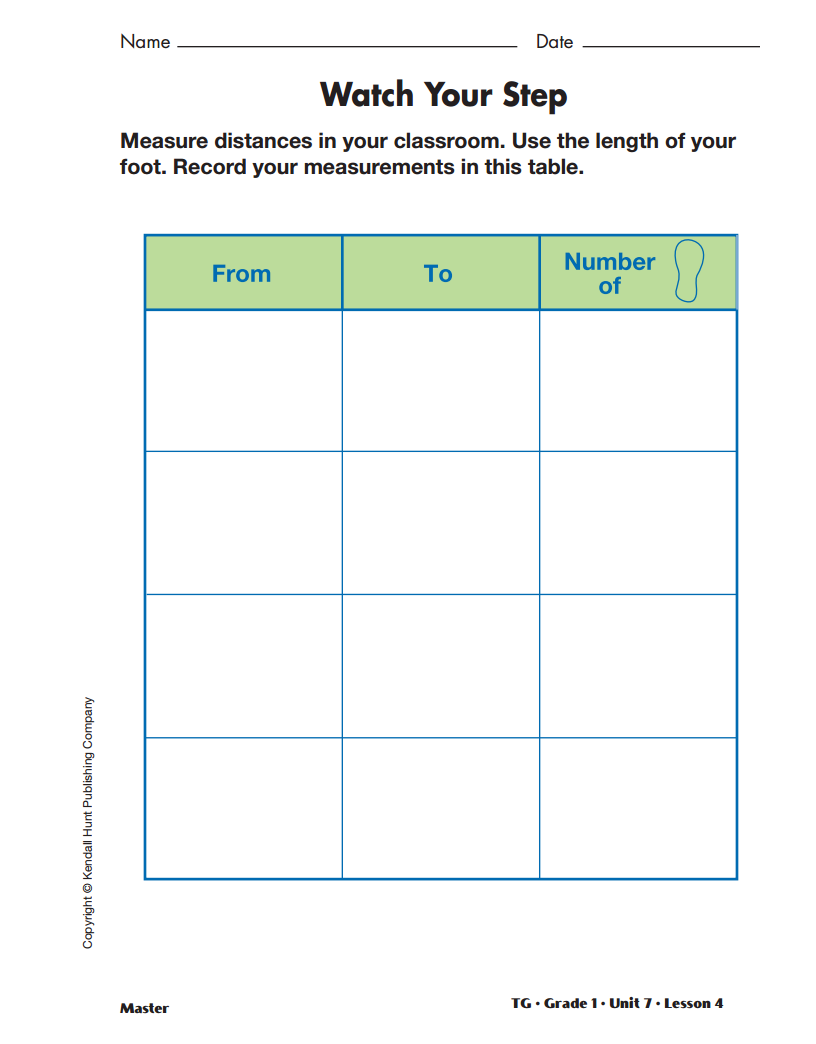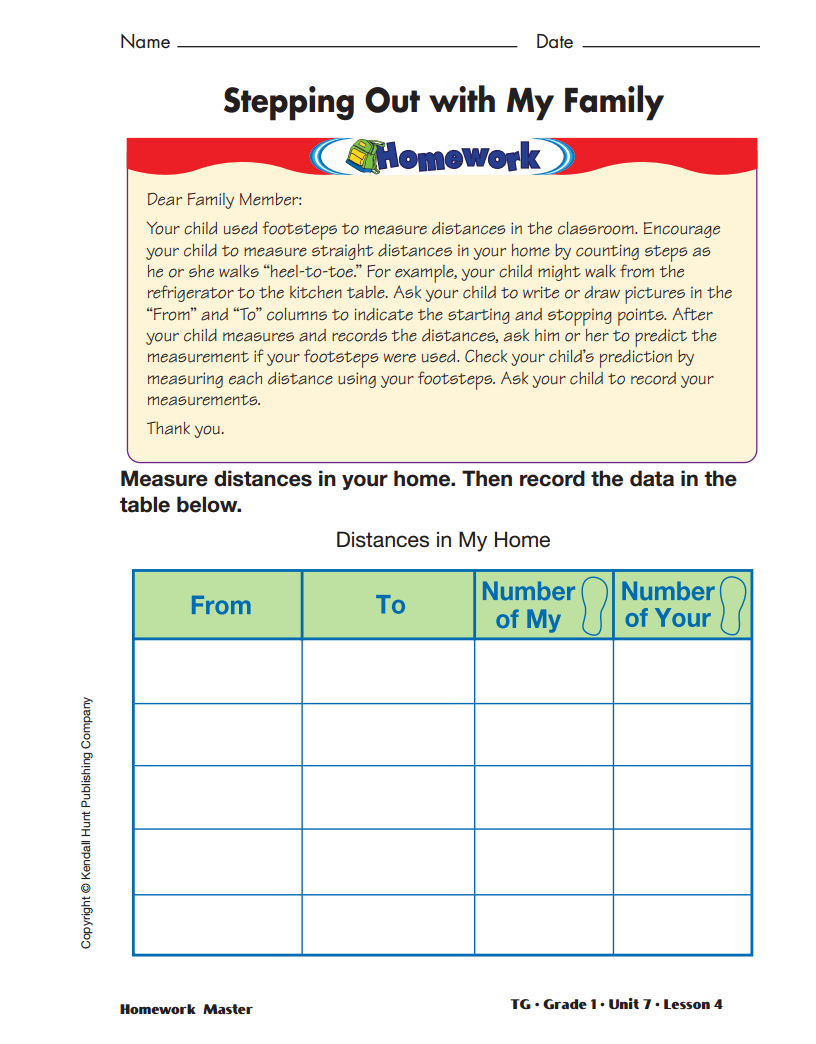Measure with Unusual Units
Est. Class Sessions: 3Developing the Lesson
Part 3: Measuring Distance
Use Foot Lengths. Students will now use their foot lengths to find the distance between two objects in the classroom.
Ask:
Demonstrate how to measure the distance from your desk to the door by walking in a zig-zag fashion, leaving gaps between your heel and toe.
Prompt a discussion on the importance of measuring carefully and accurately by asking:
Refer again to the Measuring Advice chart prepared and displayed in Lesson 2. Review good measuring techniques using a foot length as a measuring unit. Have the students do the following activity:
- Use a piece of masking tape or chalk to mark a straight path from your desk to the door.
- Demonstrate walking heel-to-toe as students count the steps. Be sure to emphasize the first step as students may ignore that step when counting.
- Have a volunteer walk the same distance heel-to-toe with the class counting along.
Record both measurements on a display.
Ask:
Distribute the copies of the Watch Your Step Master you prepared prior to the lesson. See Materials Preparation. Students will measure and record four distances with their foot lengths. Students may do this activity in pairs. However, each student should measure the distances with his or her own feet.
Upon completion, ask:
Compare and Order Foot Lengths. Choose one of the distances that students measured. Distribute one self-adhesive note or a small scrap of paper to each student. Ask students to write on the paper the number of their foot lengths it took to measure that distance.
With paper in hand, have students line up in order of their foot size. They can compare their feet in a manner similar to that of a Bubble Sort done in Unit 1 Lesson 5, or in a less formal way. Encourage students to use comparative language when comparing and ordering the lengths of their feet. For example, "Is your foot shorter than her foot?" and "My foot is longer than your foot."
After sorting, the student with the longest foot will be at one end of the line and the student with the shortest foot will be at the other end of the line. Help students to see that the measure of length is dependent on the size of the unit of measure, and to recognize the inverse relationship between the size of the measuring unit (their feet) and the total number of units used. The shorter the unit, the greater the number that will result in measuring. In other words, the shorter the child's foot, the more of them it will take to measure the distance. This can be demonstrated by having students read their measurements while lined up in order of foot length.
Ask:
Measure the distance using your own foot length and share the number with the class.
Assign the Stepping Out with My Family Homework Master. Suggest to students that when doing the homework, they try to predict how many foot lengths their family members will take for each measurement.















